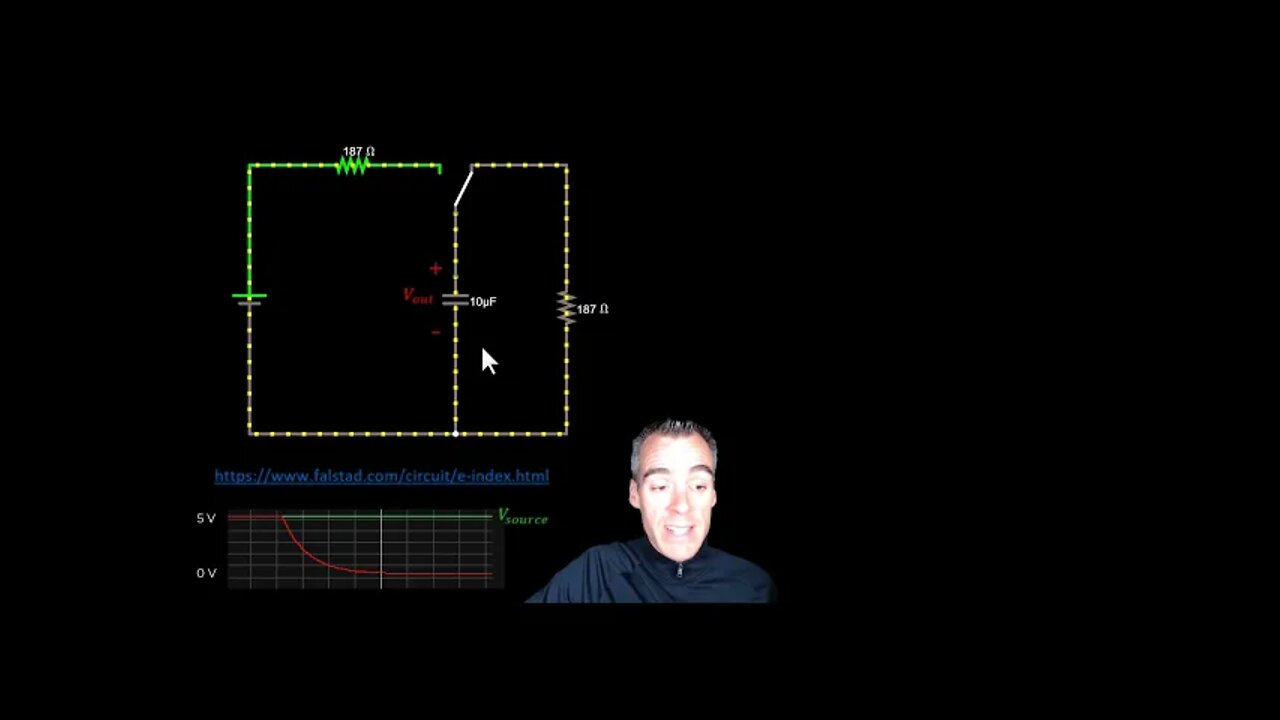Premium Only Content

How Low Pass Filters Work
This video gives visual demonstrations of how capacitors and low pass filters work. It shows the circuit, the equations, the time-varying inputs and outputs, and the frequency response plot.
Start with visual of capacitor and current and voltage and time
Show applied DC voltage and voltage across capacitor
Note current initially flows until capacitor 'charges up' to source voltage level
Capacitor discharge in same time
Note that increasing capacitance makes it take longer to charge
Increased capacitance corresponds to decreased impedance per the equation
Which means it's not 'impeding' as much on stopping the current from flowing through it.
Discuss connection between temporal response and cutoff frequency
Go back to 10 u
Now instead of a DC input hear let's go with a square wave with 20 Hz
This is going to cycle between 5 V to –5 V 20 times a second, so one cycle every 50 ms.
Notice the voltage across the capacitor takes a little bit of time to follow this, but it catches up and is the same as the square wave most of the time
That means this signal at a frequency of 20 Hz would 'pass'.
Now let's crank this up to 85 Hz, which happens to be the cutoff frequency of this filter.
Notice that as soon as the capacitor 'catches up' to the source voltage, it gets switched. So at this frequency, the source signal might pass, but it will be attenuated since the voltage across the capacitor is spending most of the time 'catching up' to the changing source
Now let's crank this up to 500 Hz, which is beyond the cutoff frequency.
Now you can see the capacitor voltage never has enough time to 'catch up' with the alternating source voltage. So some of the signal would pass but it would be significantly attenuated
If we crank this up even further to 5 kHz you can see there is basically no response from our output voltage. The 5 kHz input square wave is (almost) completely cutoff.
Now let's visualize what we've shown on a frequency response graph.
So here the x axis represents frequencies in a log scale, and the y axis represents how much of the source signal gets through to the ouput.
So if we go on this graph to the frequency we first showed of 20 Hz, you can see the the loss is small, and this is where our output signal was pretty close to the input signal
Then we go up to 80 hZ and you can see this curve has gone down a bit, this repsresents the –3dB where our output has lost about half the power of the input signal.
Then we go to 500 Hz and you can see it's further down,
And 5 kHz is of course further down still representing more attenuation of our source square wave
So you can see how this setup yields a low-pass filter, because it will pass the lower-frequency 20 Hz signal pretty closely, but will almost completely reject the 5 kHz squarewave.
So this is how a low pass filter works to allow lower frequencies and reject higher frequencies, and as discussed this is due to the time delay capacitors have with storing electrical energy.
If you were able to follow this, then you should have a good fundamental understanding of how capacitors and low pass RC filters work, and if you understand this, then it should be relatively straight forward to extend this understanding to how high-pass filters work, and to how filters using inductors instead of capacitors.
-
 1:33:25
1:33:25
Jeff Ahern
4 hours ago $5.58 earnedThe Saturday Show with Jeff Ahern
21.2K7 -
 LIVE
LIVE
Spartan
3 hours agoStellar Blade Hard Mode with death counter (First Playthrough)
47 watching -
 LIVE
LIVE
GrimmHollywood
4 hours ago🔴LIVE • GRIMM HOLLYWOOD • SGT WILKY'S WARZONE PALOOZA 2 •
121 watching -
 20:36
20:36
It’s the Final Round
4 hours ago $5.48 earnedNBA Best Bets & Player Props | Full Analysis & Predictions, FREE Today (Saturday 11/9) November 9th
23.3K2 -
 LIVE
LIVE
The Real Tombliboos - Live Streaming
16 hours ago $1.92 earned🎮 Charity Stream for Extra Life 4 Kids! ❤ Supporting Texas Children’s Hospital ! 🙌
86 watching -
 LIVE
LIVE
Amarok_X
5 hours ago $0.23 earned🟢LIVE | BF6 REDSEC | OPERATION 100 FOLLOWERS | VETERAN GAMER
12 watching -
 18:08
18:08
Professor Nez
6 hours ago⚠ Charlie Kirk WARNED America about Zohran Mamdani
18.1K79 -
 LIVE
LIVE
GritsGG
4 hours ago#1 Most Warzone Wins 3943+!
23 watching -
 4:27:15
4:27:15
FoeDubb
5 hours ago🏰KINGDOM MENU: 🎮💻SHORT SESH ON DECK VIBES ON DECK DILLY DILLY!!!
1.93K -
 2:16:26
2:16:26
Megyn Kelly
1 day agoBen Shapiro Responds to Tucker Carlson, Plus Sydney Sweeney and Newsom, with Knowles and Klavan
98.3K267